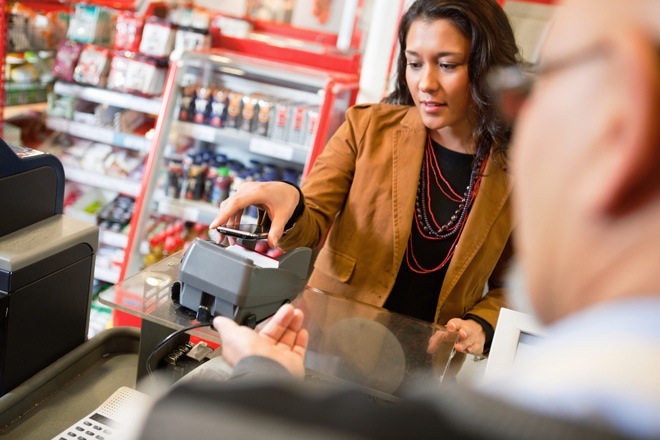Ralph Dangelmaier is CEO of BlueSnap.
Everywhere you look, mobile commerce’s star is rising.
According to a recent Deloitte survey, for example, 68 percent of smartphone owners plan to use their devices for holiday shopping this season. According to an eMarketer forecast, mobile devices will drive more than $41 billion or 16 percent of retail ecommerce sales this year – up from 7 percent just two years ago. By 2017, eMarketer expects mcommerce sales to nearly triple to $113 billion.
But those sunny prognostications ignore a giant fly in the ointment: the abandonment of mobile shopping carts.
A Harris Interactive survey conducted earlier this year found that two out of three consumers who have tried to make a purchase on their smartphone or tablet have stopped short because of various snags during the checkout process. Other reports have found mobile shopping cart abandonment rates exceeding 90 percent – some 20 points higher than on larger devices.
Explanations typically range from hard-to-navigate mobile carts and mobile sites that aren’t optimized to fit the smaller mobile form factor, to problems such as high shipping costs, long delivery times and “window shopping” behaviors that put a damper on mobile and non-mobile commerce alike.
One factor that many merchants and analysts miss, however, is the role of the mobile payment system itself. Most mobile payment platforms still require too many steps to checkout, lack flexible payment models, have limited ability to offer promotional features like couponing, and completely ignore the realities of selling in a global economy.
With the continuing shift to smartphones and tablets as the computing devices of choice – illustrated by recent IDC predictions that desktops and laptops will account for only 13% of the worldwide smart connected device market by 2017 – merchants are bound to lose billions in mobile shopping dollars until these gaps can be closed. Many of the missing pieces are routinely included in online payment systems but are MIA in mobile editions. Among the deficiencies are:
1. One-click checkout
One-click purchasing may be standard operating procedure for returning shoppers making purchases on their desktops or laptops, but it’s still the exception to the rule in the mcommerce world – despite the fact that repeatedly entering credit card information and other personal data on small screens can be an even bigger turnoff to shoppers than having to do it on a full-size keyboard. A few months ago, Facebook announced that it was testing one-click checkout for partners’ mobile apps. While Facebook has said that partners will still be able to work with the payment processors of their choice, the announcement demonstrates the priority that key industry players are placing on simplifying mobile checkout.
2. Flexible subscription management
From Netflix and newspapers to pet food, shoe and children’s product companies, e-merchants are embracing online subscription models, yet mcommerce sites can process only the most basic subscriptions if at all. Mobile payment systems should be able to offer multiple plan types (eg pay per use, trial with standard subscription, initial charge followed by subscription), any payment cycle (eg daily, weekly, monthly and other permutations) and custom options (eg upgrades, grace periods, maximum charge limits). Systems should also be able to support any payment method as a subscription option, including wire and bank transfers, purchase orders and e-checks.
3. Promotional tools
Online offers are an essential part of an e-marketer’s bag of tricks, but most mobile sites are handicapped when it comes to dynamically generating deals to drive sales, increase order value and/or reduce customer churn. Mobile payment systems need the ability to serve up coupons, upsells, cross-sells, free trials, product bundles, subscription update reminders and other marketing offers on the fly, based on whatever the shopper has placed in his or her shopping cart. These kinds of incentives can help prevent shoppers from exiting mobile carts before hitting the checkout button.
4. Global shopping support
We all know the world is flat, but most mobile shopping carts still haven’t gotten the message. A shopper in France who wants to download an eBook doesn’t want to see checkout pages in English or cart calculations in dollars. Mobile payment systems need to display localized content, currencies and payment methods based on the shopper’s location – from multi-country methods like WebMoney, CashU and Skrill to Alipay in China, Giropay in Germany and Boleto Bancario in Brazil.
At the end of the day, it’s all about the buying experience. Mobile stores need to adapt to mobile platforms as well as offer fast, full-featured, marketing-savvy shopping carts. When that happens, fewer carts will be left holding the (shopping) bag – and the mcommerce juggernaut will gain even more speed than the pundits are predicting today.
Ralph Dangelmaier is CEO of BlueSnap, a smarter payment gateway designed to convert more shoppers to buyers worldwide.
VentureBeat's mission is to be a digital town square for technical decision-makers to gain knowledge about transformative enterprise technology and transact. Learn More

